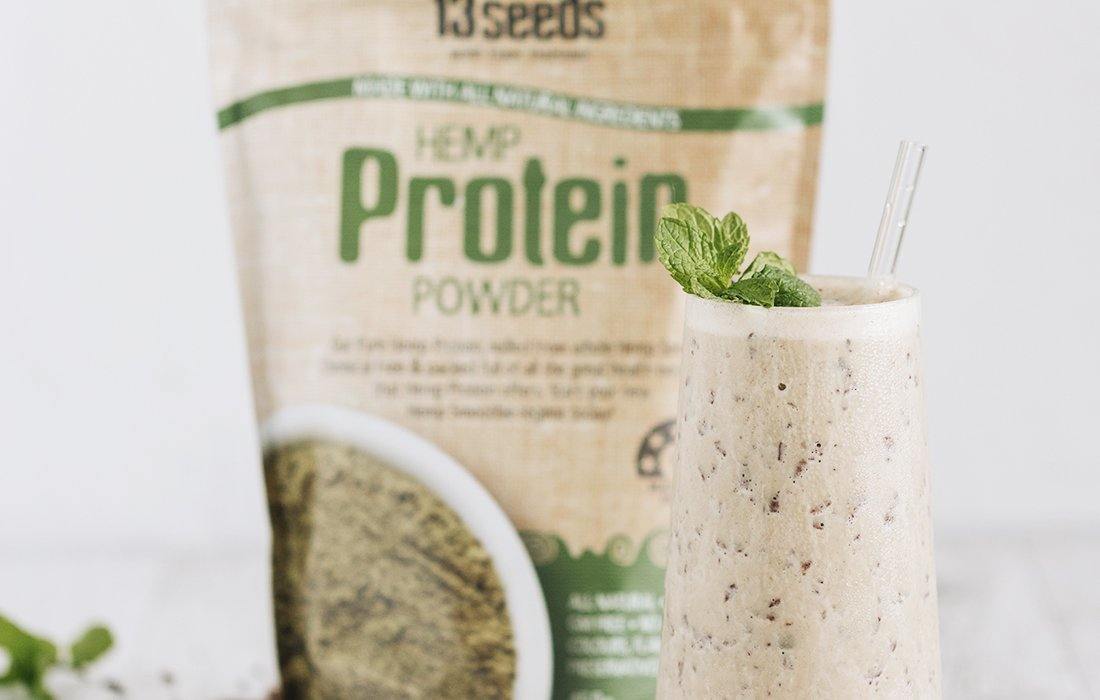Last week we had a question from Carlee was wondering ‘Why hemp seed protein is sometimes referred to as a ‘skinny protein?’
In the past our head nutritionist Ben has discussed how energy balance is the most important factor when it comes to weight loss. Just a recap: Energy Balance is when there’s too much energy coming in from foods and not enough energy being used through movement/exercise that results in weight gain.1
However, protein intake in the diet can also influence weight gain! But what does the science have to say about it and how exactly does protein assist with weight loss!? Let’s find out shall we…
What is protein?
Protein is one of our main macronutrients (macro=large), meaning we need this nutrient in large amounts. Proteins are made up of 20 amino acids (the building blocks of protein). Some of the main functions of protein include growth and recovery. You can get protein from both and animal and plant-based sources such as meat, fish, egg, dairy products, nuts, seeds, and legumes (eg. beans and lentils).2
How does protein assist with weight loss?
An article in the American Journal of Clinical nutrition explains that several studies indicate that high protein diets showed greater weight loss, fat loss, and increased lean muscle mass compared to low protein diets. Furthermore, the high protein diets also saw a reduced fat cells, a reduction in blood pressure and waist circumference in high protein diets.3
But how exactly could protein produce these kinds of results? There are 3 different mechanisms that may explain why protein can assist in weight loss
- Thermic effect of food and resting energy expenditure
- Increased fullness (satiety)
- Reduced energy intake
1. Thermic effect of food
When you eat foods, some of the energy in foods with be to digest, absorb and metabolise the rest of the food this is what’s called ‘thermic effect of food’ or ‘TEF’ and this counts for approximately 10% of your total daily energy expenditure (TDEE): an estimate of how many calories (energy) you burn a day.

Graphic provided by theecalculator.net
Protein’s TEF is 20-30%, compared to our other macronutrients fats 0-3% and carbohydrates 5-10%.4
2. Increased fullness (satiety)
Studies show that we are still not 100% sure why protein intake has been associated with increased satiety. The British journal of Nutrition suggest some possible mechanisms that include amino acids in protein contributing to a brain chemicals that produce satiety in the brain that helps us feel full. Interestingly, the feeling of satiety differs based on the type of amino acids consumed in the diet eg. complete proteins (containing all 9 essential amino acids) increasing satiety compared to incomplete proteins (non containing all 9 essential amino acids). Fortunately, hemp seeds are considered to be a complete protein so in theory could assist in satiety and weight loss.5
3. Reduced energy intake
So now that we know that protein is capable of helping us to feel full, this could explain why people consuming diets high in protein eat less. When we eat less this would put us in a calorie deficit (fancy word for eating less than required) that is supportive that results in weight loss.6
How much protein do you need to support weight loss?
Protein requirements varies depending on your weight, gender, age and physical activity. However, a diet that contains anywhere between 0.8 – 1.6g per kg of bodyweight should be enough to support weight loss.7
At 13 Seeds we want to make this is as simple as possible, so 1g per kg of bodyweight would cover the majority of us.
Eg. 70kg female = 70g protein
|
Hemp protein powder |
42.1g |
|
Hemp hearts |
33.1g |
|
Fish, Lamb, chicken, beef (100g) |
30g |
|
Tofu (100g) |
12g |
|
Yoghurt (100g) |
12g |
|
Lentils/chickpeas (100g cooked) |
9g |
|
Soy milk (200ml) |
7g |
|
Cheese (30g) |
8g |
|
Split peas (100g cooked) |
8g |
|
Kidney beans (100g cooked) |
7g |
|
Linseed (2 tbs) |
7g |
|
Nuts (30g) |
6g |
|
Other seeds (30g) |
7g |
What are:
- lean meats – beef, lamb, veal, pork, kangaroo
- poultry – chicken, turkey, duck, emu, goose, bush birds
- fish and seafood – fish, prawns, crab, lobster, mussels, oysters, scallops, clams
- eggs
- dairy products – milk, yoghurt (especially Greek yoghurt), cheese (especially cottage cheese)
- nuts (including nut pastes) and seeds – almonds, pine nuts, walnuts, macadamias, hazelnuts, cashews, pumpkin seeds, sesame seeds, sunflower seeds
- legumes and beans – all beans, lentils, chickpeas, split peas, tofu.
As always, I love hearing all your questions and they help me to provide all this awesome and free content for our community. So if you have any nutritional or hemp questions - ask away at ben@13seeds.com.au
References
- https://www.ncbi.nlm.nih.gov/pmc/articles/PMC3302369/
- https://www.betterhealth.vic.gov.au/health/healthyliving/protein
- https://pubmed.ncbi.nlm.nih.gov/25926512/#:~:text=Several%20meta%2Danalyses%20of%20shorter,%2Dprotein%20energy%2Drestriction%20diets
- https://examine.com/topics/thermic-effect-of-food/
- https://www.cambridge.org/core/journals/british-journal-of-nutrition/article/dietary-protein-its-role-in-satiety-energetics-weight-loss-and-health/CCA49F7254E34FF25FD08A78A05DECD7
- https://www.cambridge.org/core/journals/british-journal-of-nutrition/article/dietary-protein-its-role-in-satiety-energetics-weight-loss-and-health/CCA49F7254E34FF25FD08A78A05DECD7
- https://www.tandfonline.com/doi/abs/10.1080/07315724.2004.10719381







